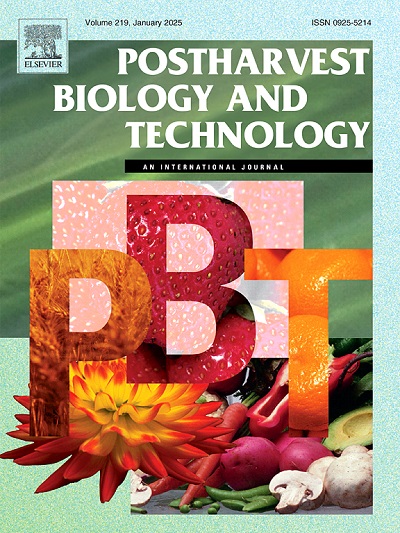Exploring eco-friendly strategies for the management of blue mold of apple caused by Penicillium crustosum thom
IF 6.4
1区 农林科学
Q1 AGRONOMY
引用次数: 0
Abstract
Blue mold disease, incited by Penicillium sp is an important post-harvest disease of apple adversely affecting their quality. The present study showed about ten percent of the fruit were affected by this disease. The causative organism of blue mold was isolated and identified as Penicillium crustosum Thom using morphological characteristics, molecular analysis (including Beta-tubulin, LSU, and ITS gene sequences), and pathogenicity tests. Following identification, green strategies such as essential oils (Eos, 8 nos) and biocontrol agents (BCAs, 6 nos) were evaluated to manage the disease. Initially, these green chemicals were assessed using the poisoned food technique. Among the eight EOs tested, Ocimum tenuiflorum L. and O. sanctum L. were selected for further studies as they showed > 90 percent inhibition of mycelial growth at all tested concentrations. In the sandwich method assay, O. sanctum demonstrated 95 % inhibition at a 0.5 % concentration and achieved 100 % inhibition at 1.0 % concentration, outperforming O. tenuiflorum which showed 93.3 % and 95.0 % inhibition at 0.5 % and 1.0 % concentration, respectively. Among BCAs (Trichoderma spp.) the inhibition of P. crustosum growth varied significantly, T. longibrachiatum (isolate 2) showed the highest mycelial growth inhibition (83.15 %) therefore selected for further studies. The most effective treatments, identified through in vitro experiments, when tested on apple fruit, the use of spray treatment of 0.5 % O. tenuiflorum EO or fumigation treatments of 1 % O. sanctum EO, gave more protection therefore recommended for management of blue mold of apple. Based on available information, this appears to be the first documented case of apple blue mold caused by P. crustosum in India, along with attempts at its ecofriendly management.
求助全文
约1分钟内获得全文
求助全文
来源期刊

Postharvest Biology and Technology
农林科学-农艺学
CiteScore
12.00
自引率
11.40%
发文量
309
审稿时长
38 days
期刊介绍:
The journal is devoted exclusively to the publication of original papers, review articles and frontiers articles on biological and technological postharvest research. This includes the areas of postharvest storage, treatments and underpinning mechanisms, quality evaluation, packaging, handling and distribution of fresh horticultural crops including fruit, vegetables, flowers and nuts, but excluding grains, seeds and forages.
Papers reporting novel insights from fundamental and interdisciplinary research will be particularly encouraged. These disciplines include systems biology, bioinformatics, entomology, plant physiology, plant pathology, (bio)chemistry, engineering, modelling, and technologies for nondestructive testing.
Manuscripts on fresh food crops that will be further processed after postharvest storage, or on food processes beyond refrigeration, packaging and minimal processing will not be considered.
 求助内容:
求助内容: 应助结果提醒方式:
应助结果提醒方式:


